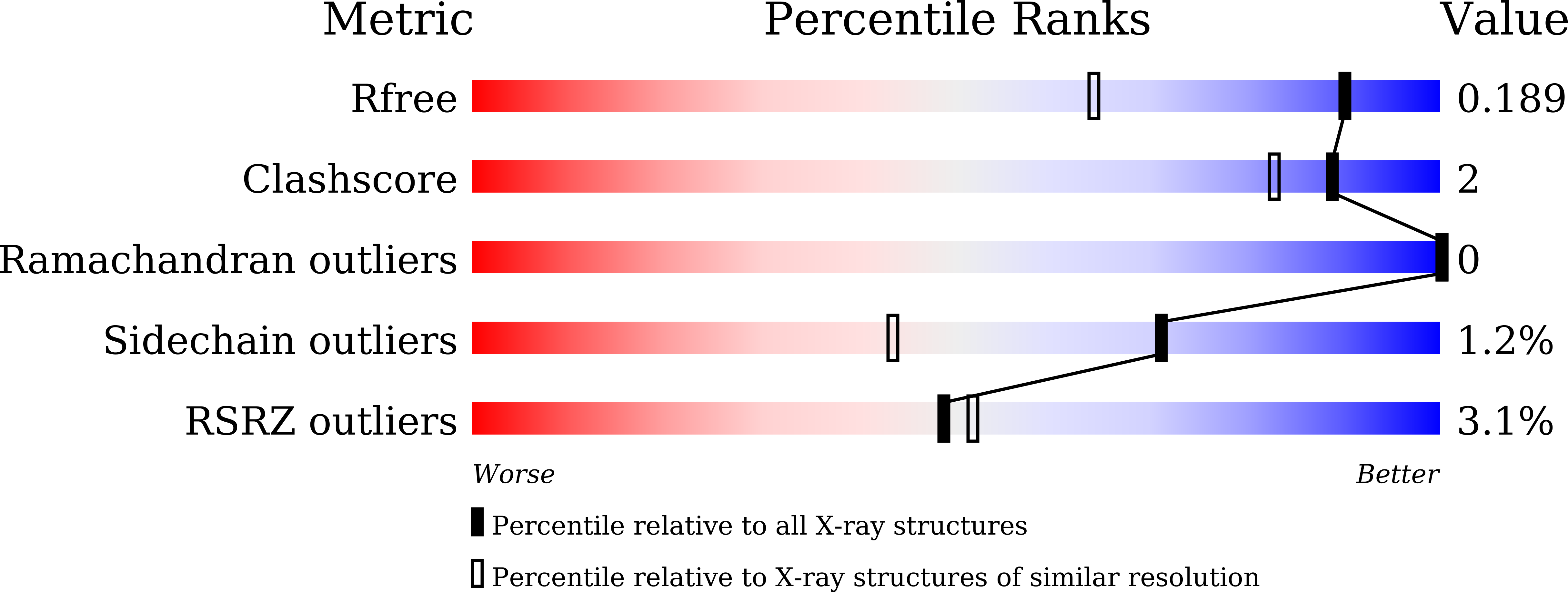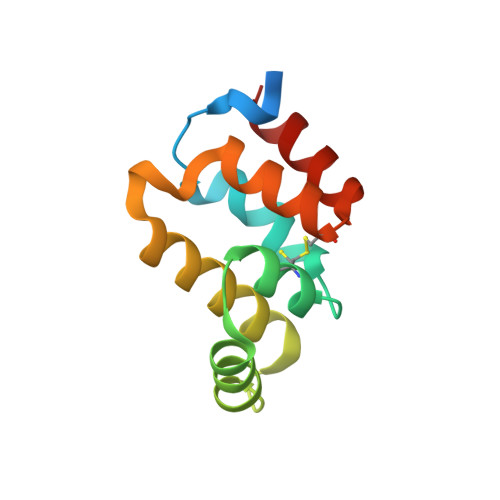Structural and Functional Insights into Host Death Domains Inactivation by the Bacterial Arginine GlcNAcyltransferase Effector.
Ding, J., Pan, X., Du, L., Yao, Q., Xue, J., Yao, H., Wang, D.C., Li, S., Shao, F.(2019) Mol Cell 74: 922
- PubMed: 30979585
- DOI: https://doi.org/10.1016/j.molcel.2019.03.028
- Primary Citation of Related Structures:
6AC0, 6AC5, 6ACI, 6E66 - PubMed Abstract:
Enteropathogenic E. coli NleB and related type III effectors catalyze arginine GlcNAcylation of death domain (DD) proteins to block host defense, but the underlying mechanism is unknown. Here we solve crystal structures of NleB alone and in complex with FADD-DD, UDP, and Mn 2+ as well as NleB-GlcNAcylated DDs of TRADD and RIPK1. NleB adopts a GT-A fold with a unique helix-pair insertion to hold FADD-DD; the interface contacts explain the selectivity of NleB for certain DDs. The acceptor arginine is fixed into a cleft, in which Glu253 serves as a base to activate the guanidinium. Analyses of the enzyme-substrate complex and the product structures reveal an inverting sugar-transfer reaction and a detailed catalytic mechanism. These structural insights are validated by mutagenesis analyses of NleB-mediated GlcNAcylation in vitro and its function in mouse infection. Our study builds a structural framework for understanding of NleB-catalyzed arginine GlcNAcylation of host death domain.
Organizational Affiliation:
National Laboratory of Biomacromolecules, CAS Center for Excellence in Biomacromolecules, Institute of Biophysics, Chinese Academy of Sciences, Beijing 100101, China; National Institute of Biological Sciences, Beijing 102206, China. Electronic address: jding@ibp.ac.cn.
















